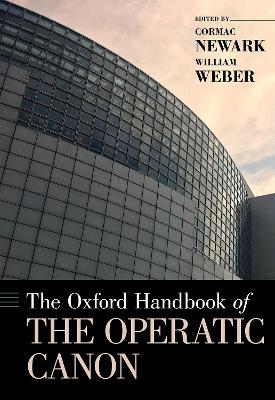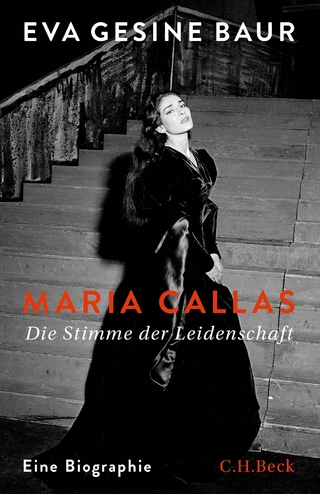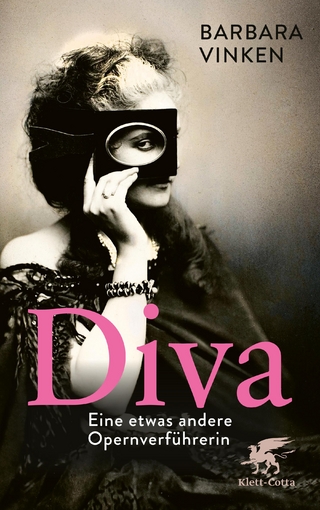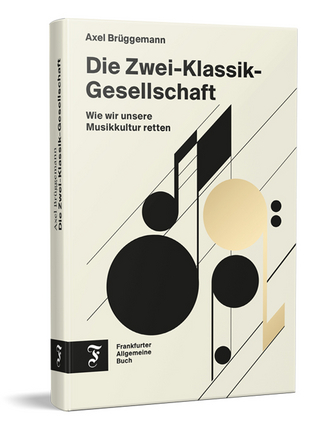
The Oxford Handbook of the Operatic Canon
Oxford University Press Inc (Verlag)
978-0-19-022420-2 (ISBN)
Opera has always been a vital and complex mixture of commercial and aesthetic concerns, of bourgeois politics and elite privilege. In its long heyday in the eighteenth and nineteenth centuries, it came to occupy a special place not only among the arts but in urban planning, too — this is, perhaps surprisingly, often still the case. The Oxford Handbook of the Operatic Canon examines how opera has become the concrete edifice it was never meant to be, by tracing its evolution from a market entirely driven by novelty to one of the most canonic art forms still in existence.
Throughout the book, a lively assembly of musicologists, historians, and industry professionals tackle key questions of opera's past, present, and future. Why did its canon evolve so differently from that of concert music? Why do its top ten titles, all more than a century old, now account for nearly a quarter of all performances worldwide? Why is this system of production becoming still more top-heavy, even while the repertory seemingly expands, notably to include early music?
Topics range from the seventeenth century to the present day, from Russia to England and continental Europe to the Americas. To reflect the contested nature of many of them, each is addressed in paired chapters. These complement each other in different ways: by treating the same geographical location in different periods, by providing different national or regional perspectives on the same period, or by thinking through similar conceptual issues in contrasting or changing contexts. Posing its questions in fresh, provocative terms, The Oxford Handbook of the Operatic Canon challenges scholarly assumptions in music and cultural history, and reinvigorates the dialogue with an industry that is, despite everything, still growing.
Cormac Newark is Head of Research at the Guildhall School of Music & Drama in London. He writes mainly on nineteenth-century French and Italian opera and literature, and is the author of Opera in the Novel from Balzac to Proust. He has published articles in journals including 19th-Century Music, the Cambridge Opera Journal, The Opera Quarterly, and the Journal of the Royal Musical Association. William Weber is Professor of History, Emeritus at California State University, Long Beach. He has contributed to the Oxford Handbook of the New Cultural History of Music (OUP, 2011) and is the author of several books, including The Rise of Musical Classics in 18th-Century England (OUP, 1992) and The Great Transformation of Musical Taste: Concert Programming from Haydn to Brahms.
Note to the reader
Contributors
Acknowledgements
General Introduction
Idiosyncrasies of the operatic canon
Cormac Newark and William Weber
Part 1. History, geography
Introduction to Chapters 1 and 2
Foundations: France and Italy in the eighteenth century
Michel Noiray and Franco Piperno
Chapater 1. The practical and symbolic functions of pre-Rameau opera at the Paris Opéra before Gluck
Michel Noiray
Chapter 2. Italian opera and the concept of "canon" in the late eighteenth century
Franco Piperno
Introduction to Chapters 3 and 4
From royal authority to public taste in Berlin, 1740-1815
John Mangum and Katherine Hambridge
Chapter 3. The repertory of the Italian Court Opera in Berlin, 1740-1786
John Mangum
Chapter 4. Catching up and getting ahead: The opera house as temple of art in Berlin c. 1800
Katherine Hambridge
Introduction to Chapters 5 and 6
Operatic practices at the London Opera: Pasticcio to repertory to canon?
Michael Burden and Jennifer Hall-Witt
Chapter 5. From recycled performances to repertoire at the King's Theatre in London, 1705-1820
Michael Burden
Chapter 6. Repertory opera and canonic sensibility at the London opera, 1820-1860
Jennifer Hall-Witt
Introduction to chapters 7 and 8
From capital-city opera house to provincial theaters in France
Patrick Taïeb, Sabine Teulon Lardic and Yannick Simon
Chapter 7. The evolution of French opera repertories in provincial theaters: Three epochs, 1770-1900
Patrick Taïeb and Sabine Teulon Lardic
Chapter 8. The mingling of opera genres: Canonic opera at the Théâtre des Arts in Rouen, 1882-1897
Yannick Simon
Introduction to chapters 9 and 10
The Italian opera world and its canons
Carlotta Sorba and Jutta Toelle
Chapter 9. Theaters, markets, and canonic implications in the Italian opera system, 1820-1880
Carlotta Sorba
Chapter 10. Operatic canons and repertories in Italy around 1900
Jutta Toelle
Introduction to chapters 11 and 12
Opera in the Western Hemisphere, 1811-1910: New York, Buenos Aires, and Montevideo
Karen Ahlquist and Benjamin Walton
Chapter 11. International opera in nineteenth-century New York: Core repertories and canonic values
Karen Ahlquist
Chapter 12. Canons of real and imagined opera: Buenos Aires and Montevideo, 1810-1860
Benjamin Walton
Introduction to chapters 13 and 14
Tension between national and cosmopolitan canons in England and Russia
William Weber and Rutger Helmers
Chapter 13. The survival of English opera in nineteenth-century concert life
William Weber
Chapter 14. National and international canons of opera in Tsarist Russia
Rutger Helmers
Part 2. Other views, other canons
Introduction to chapters 15 and 16
Singers and the operatic canon
Kimberley White and Hilary Poriss
Chapter 15. Setting the standard: Singers, theater practices, and the operatic canon in nineteenth-century France
Kimberley White
Chapter 16. Redefining the standard: Pauline Viardot and Gluck's Orphée
Hilary Poriss
Introduction to chapters 17 and 18
Uses of the operatic canon
Cormac Newark and Mark Berry
Chapter 17. Canons of the Risorgimento then and now
Cormac Newark
Chapter 18. "Blow the opera houses into the air": Wagner, Boulez, and modernist canons
Mark Berry
Introduction to chapters 19 and 20
Re-writing the operatic canon
Flora Willson and William Gibbons
Chapter 19. Phantoms at the Opéra: Meyerbeer and de-canonization
Flora Willson
Chapter 20. The uses and disadvantages of opera history: Unhistorical thinking in fin-de-siècle Paris
William Gibbons
Introduction to chapters 21 and 22
Contiguous genres: Operetta and American musicals
Micaela Baranello and Raymond Knapp
Chapter 21. Viennese operetta canon formation and the journey to prestige
Micaela Baranello
Chapter 22. Canons of the American musical
Raymond Knapp
Introduction to chapters 23 and 24
Twentieth-century reproductive technology and the operatic canon
Karen Henson and Hugo Shirley
Chapter 23. Sound recording and the operatic canon: Three "drops of the needle"
Karen Henson
Chapter 24. Opera on film and the canon
Hugo Shirley
Introduction to chapters 25 and 26
Views of the operatic canon from the industry
John Rockwell and Kasper Holten
Chapter 25. Critical reflections on the operatic canon
John Rockwell
Chapter 26. Inside and outside the operatic canon, on stage and in the boardroom
Kasper Holten
Bibliography
| Erscheinungsdatum | 06.10.2020 |
|---|---|
| Reihe/Serie | Oxford Handbooks |
| Zusatzinfo | 73 illus. |
| Verlagsort | New York |
| Sprache | englisch |
| Maße | 170 x 249 mm |
| Gewicht | 1225 g |
| Themenwelt | Kunst / Musik / Theater ► Musik ► Klassik / Oper / Musical |
| Kunst / Musik / Theater ► Musik ► Musiktheorie / Musiklehre | |
| ISBN-10 | 0-19-022420-7 / 0190224207 |
| ISBN-13 | 978-0-19-022420-2 / 9780190224202 |
| Zustand | Neuware |
| Haben Sie eine Frage zum Produkt? |
aus dem Bereich


